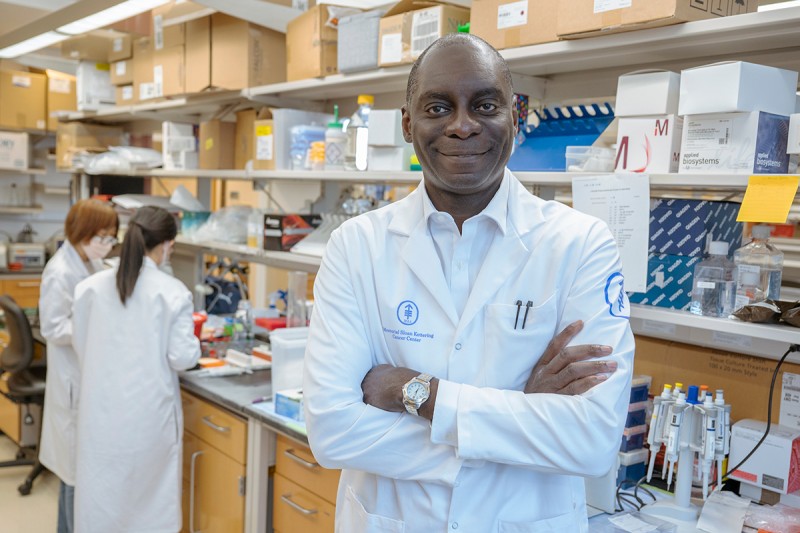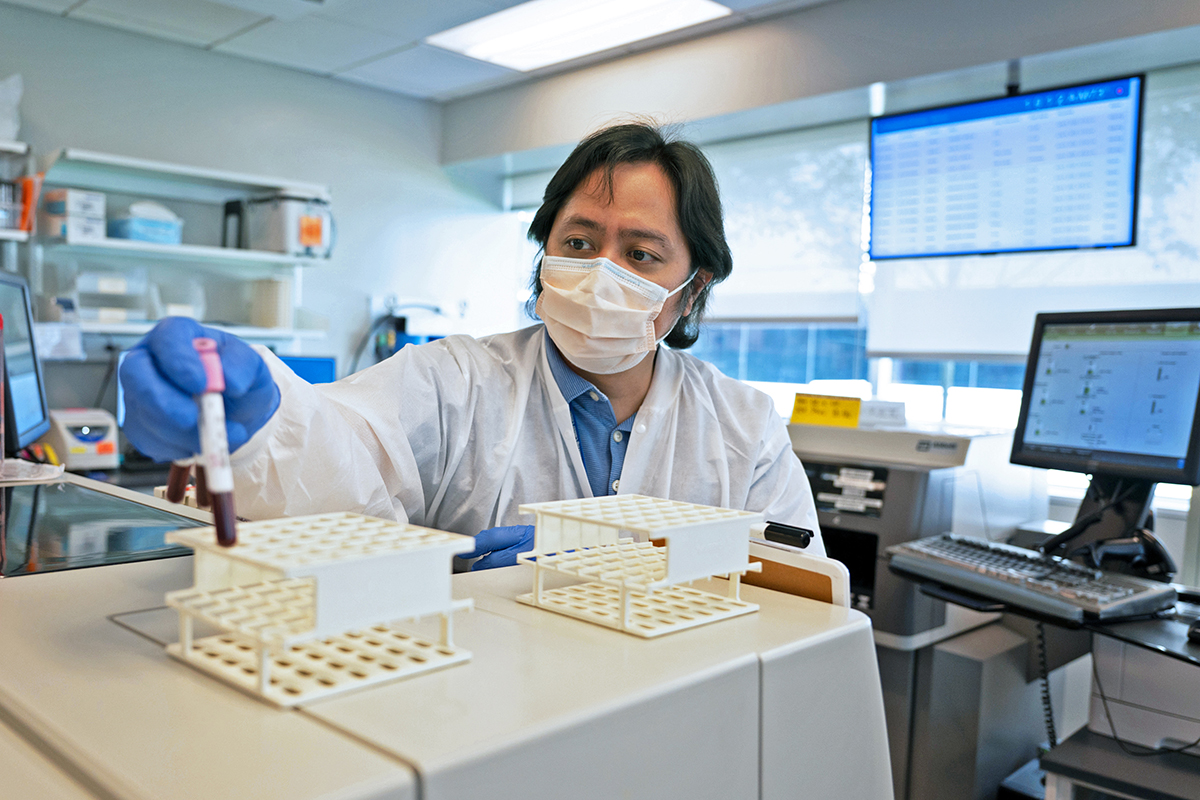
Dr. Kojo S. J. Elenitoba-Johnson is Chair of MSK’s Department of Pathology and Lab Medicine. He leads teams of MSK experts in interpreting lab tests and diagnosing disease.
What is a pathologist?
A pathologist is a doctor who uses a microscope to make a diagnosis. Pathologists are sent a sample of cells or tissue, which they examine under a microscope. The record of their exam is called a pathology report. Your care team uses this pathology report to make a correct diagnosis. Working together, your care team and you will choose the best treatment plan for you.
MSK pathologists are experts at diagnosing cancer
Pathologists at MSK are specialists in cancer and diseases related to cancer. We diagnose thousands of cases a year. Working daily with so many tests means our pathologists have deep experience in diagnosing cancer and related diseases.
We have 19 teams of experts that interpret lab tests for cancer. Our pathology department processes about 2,000 tissue samples every workday. MSK’s pathology teams write more than 170,000 reports a year.
MSK’s pathology department uses the latest technology and most advanced diagnostic methods. It has developed new technology and tests that describe a cancer with far better accuracy. MSK’s methods give more exact descriptions of a cancer’s stage (how far it has spread) and tumor type.
What is a biopsy to diagnose cancer or a tumor?
Doctors often recommend a biopsy if a physical exam or diagnostic test suggests cancer. A biopsy is a procedure done to take samples of tissue or cells to check for cancer. During a biopsy, your doctor removes a small amount of cells or tissue for a pathologist to examine.
For most types of cancer, a biopsy is the only way to make a diagnosis. A biopsy also gives us a sample to test for genetic information about the cancer.
The most common types of biopsies
- Incisional biopsy (in-SIH-zhuh-nul BY-op-see): Only a sample of tissue is removed.
- Excisional biopsy (ek-SIH-zhuh-nul BY-op-see): An entire lump or suspicious (abnormal) area is removed.
- Needle biopsy: A sample of tissue or fluid is removed using a needle.
Medical scan: Image-guided biopsy
We may need a tissue sample from an area that is not easy to get to, such as your liver or lung. In that case, we use a medical scan to see inside your body to help us get a tissue sample. A doctor who uses medical scans to guide procedures, such as biopsies, is called an interventional radiologist.
Some common medical imaging tests are ultrasound and CT, PET, and MRI scans. These medical scans guide your interventional radiologist as they use a needle or other tools to get a sample.
Learn more about how our doctors use interventional radiology to treat cancer.
How pathologists study a sample from a biopsy
After your biopsy, the sample goes to a pathologist. They look at the cells under a microscope for signs of cancer.
If it’s cancer, your pathologist will run tests to learn more about the cancer and whether it’s likely to spread. Their pathology report will note if the tissue sample is benign (not cancer) or malignant (cancer).

MSK Monmouth laboratory technologist Christopher Red is on a team that helps thousands of people each year receive a fast and accurate diagnosis.
How the pathology report affects your cancer treatment
The pathology report has information that helps your care team recommend your best treatment options. The report has a diagnosis based on your sample, with details about any cancer cells.
The report includes information about:
- The type of cancer.
- Whether the cancer has metastasized (spread).
- Whether the cancer is invasive. This is cancer that spread past the layer of tissue where it started and is growing into nearby healthy tissue.
- How deep the cancer has spread into nearby healthy tissue.
- The cancer’s staging, which describes traits such as the tumor’s size, location, and whether it has spread.
- Whether the cancer has hormone receptors or other tumor markers.
Some common terms in a pathology report
Your pathology report is written for other doctors, and will have unfamiliar medical words. Here are some terms you may see:
Histologic (HIS-tuh-LAH-jik) grade is a description of the tumor. Your care team uses it to plan your treatment and predict treatment results. The histologic grade tells us how likely it is the cancer cells will grow and spread. It compares their size and shape to your healthy cells.
A tumor with cells that look more like healthy cells is low grade. They often grow and spread more slowly than high-grade cancer cells.
Mitotic (my-TAH-tik) rate measures how often the cancer cells are dividing. Tumors with fewer dividing cells often are low grade, and are more likely to have better treatment results.
Lymph node status tells us whether the cancer has spread to nearby lymph nodes or other areas. Lymph nodes are small, bean-shaped glands that help fight infection.
The report will note if the tumor has spread to blood vessels or lymph vessels that flow into the lymph nodes. If so, there is a higher chance the cancer has metastasized.
Staging tells us how advanced a cancer is. Staging describes the tumor’s size, location, and whether it has spread. Staging helps your doctor decide on the best treatment and follow-up care.
Microscopic description describes how the sample looks under a microscope.
MSK-IMPACT: testing cancer tumors for genetic mutations
We use a testing tool only offered at MSK called MSK-IMPACT®. It’s for people with advanced cancer, and some early-stage cancers. This test looks at about 500 genes for genetic changes (mutations or variants) and other tumor traits.
MSK-IMPACT gives us important information that tells us:
- The best treatment choices based on your tumor’s profile.
- Whether it’s likely a certain treatment will work well for you.
- If you’re a good match for one of our research studies, also known as clinical trials.
MSK doctors and researchers created MSK-IMPACT. It’s the first tumor-profiling test developed in a laboratory to get approved by the U.S. Food and Drug Administration.
If you need a more sensitive test after you have MSK-IMPACT, MSK also offers MSK-ACCESS®. It’s a liquid biopsy test that looks for cancer cell genetic traces in your blood. This test analyzes 129 genes to see if your cancer has come back.
For people with blood cancer, MSK offers a test called MSK-IMPACT Heme.

